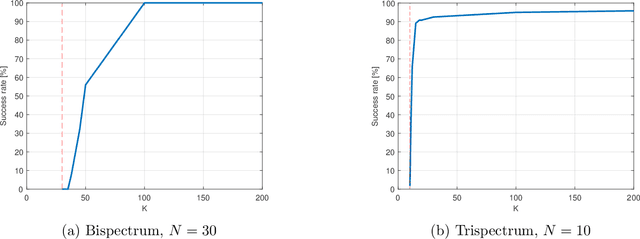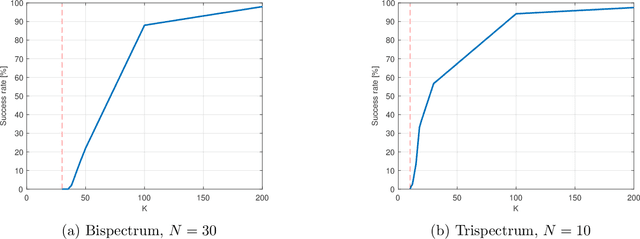Signal recovery from a few linear measurements of its high-order spectra
Paper and Code
Mar 02, 2021

The $q$-th order spectrum is a polynomial of degree $q$ in the entries of a signal $x\in\mathbb{C}^N$, which is invariant under circular shifts of the signal. For $q\geq 3$, this polynomial determines the signal uniquely, up to a circular shift, and is called a high-order spectrum. The high-order spectra, and in particular the bispectrum ($q=3$) and the trispectrum ($q=4$), play a prominent role in various statistical signal processing and imaging applications, such as phase retrieval and single-particle reconstruction. However, the dimension of the $q$-th order spectrum is $N^{q-1}$, far exceeding the dimension of $x$, leading to increased computational load and storage requirements. In this work, we show that it is unnecessary to store and process the full high-order spectra: a signal can be characterized uniquely, up to a circular shift, from only $N+1$ linear measurements of its high-order spectra. The proof relies on tools from algebraic geometry and is corroborated by numerical experiments.
 Add to Chrome
Add to Chrome Add to Firefox
Add to Firefox Add to Edge
Add to Edge